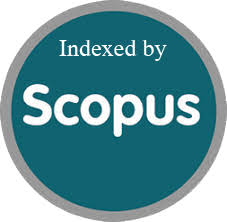Application of the Method of Characteristics with Unsteady Friction Model for Numerical Modeling of Transient Flow Induced by Valve Closure
Abstract
The paper presents a comprehensive methodology for simulating transient flow in pipeline systems induced by valve closure, using the method of characteristics with an unsteady friction model. The research focuses on the instantaneous acceleration-based (IAB) model, a mathematical model employed to describe water hammer behavior in pipeline systems. The methodology includes the development of a mathematical model based on governing fluid dynamics equations, numerical simulation using the proposed model, and validation against experimental data obtained from laboratory-scale pipelines. The study compares the performance of steady and unsteady friction models, revealing the limitations and strengths of each in simulating water hammer events. The paper also discusses the estimation of the damping coefficient (k) using trial-and-error and Reddy's analytical method, and the influence of numerical parameters on the IAB model performance. The numerical results demonstrate good agreement with experimental data, validating the proposed model's accuracy. The methodology presented in this paper can serve as a valuable tool for analyzing and designing pipeline systems subject to water hammer phenomena. It provides insights into transient flow characteristics induced by valve closure and assists in identifying appropriate mitigation measures to prevent damage to the pipeline system.
References
- A. Bergant, A. Ross Simpson, and J. Vtkovsk, Developments in unsteady pipe flow friction modelling, Journal of hydraulic research, vol. 39, no. 3, pp. 249257, 2001.
- A. E. Vardy and J. M. B. Brown, Transient turbulent friction in smooth pipe flows, J Sound Vib, vol. 259, no. 5, pp. 10111036, 2003.
- A. EL-Turki, Modeling of hydraulic transients in closed conduits, Colorado State University, USA, 2013.
- A. M. EL Zahaby, E. El Agouz, M. Amr, A. El-Rahman, and others, Water Hammer Phenomenon: Analysis and Solutions Journal of Engineering Research, vol. 3, no. June, pp. 2334, 2019.
- B. Brunone, B. W. Karney, M. Mecarelli, and M. Ferrante, Velocity profiles and unsteady pipe friction in transient flow, J Water Resour Plan Manag, vol. 126, no. 4, pp. 236244, 2000.
- B. Zhang, W. Wan, and M. Shi, Experimental and numerical simulation of water hammer in gravitational pipe flow with continuous air entrainment, Water (Switzerland), vol. 10, no. 7, Jul. 2018, doi: 10.3390/w10070928.
- G. Bertaglia, M. Ioriatti, A. Valiani, M. Dumbser, and V. Caleffi, Numerical methods for hydraulic transients in visco-elastic pipes, J Fluids Struct, vol. 81, pp. 230254, Aug. 2018, doi: 10.1016/j.jfluidstructs.2018.05.004.
- H. M. al-Yassiri, K. H. Ali, and J. M. Jalil, Three-dimensional numerical study of flow characteristics through a centrifugal pump, Al-Rafidain Engineering Journal (AREJ), vol. 16, no. 1, pp. 7588, 2008.
- H. Prashanth Reddy, W. F. Silva-Araya, and M. Hanif Chaudhry, Estimation of decay coefficients for unsteady friction for instantaneous, acceleration-based models, Journal of Hydraulic Engineering, vol. 138, no. 3, pp. 260271, 2012.
- J. B. Turpin, Variable step integration coupled with the method of characteristics solution for water-hammer analysis, a case study, in 52nd JANNAF Propulsion Meeting, 2004.
- J. Duan, C. Li, and J. Jin, Establishment and Solution of Four Variable Water Hammer Mathematical Model for Conveying Pipe, Energies (Basel), vol. 15, no. 4, Feb. 2022, doi: 10.3390/en15041387.
- J. P. Vtkovsk, A. Bergant, A. R. Simpson, and M. F. Lambert, Systematic evaluation of one-dimensional unsteady friction models in simple pipelines, Journal of Hydraulic Engineering, vol. 132, no. 7, pp. 696708, 2006.
- K. Urbanowicz et al., Modeling transient pipe flow in plastic pipes with modified discrete bubble cavitation model, Energies (Basel), vol. 14, no. 20, Oct. 2021, doi: 10.3390/en14206756.
- M. H. Arefi, M. Ghaeini-Hessaroeyeh, and R. Memarzadeh, Numerical modeling of water hammer in long water transmission pipeline, Appl Water Sci, vol. 11, no. 8, Aug. 2021, doi: 10.1007/s13201-021-01471-9.
- M. H. Chaudhry, Applied Hydraulic Transients, Third Edition. New York, NY: Springer, 2014.
- M. Kubrak, A. Kodura, A. Malesiska, and K. Urbanowicz, Water Hammer in SteelPlastic Pipes Connected in Series, Water (Switzerland), vol. 14, no. 19, Oct. 2022, doi: 10.3390/w14193107.
- M. S. Alhmdany, M. A. Alsawaf, and Z. A. Sulaiman, Numerical and Physical Modelling to Dissipate the Flow Energy of Spillway Using Multiple Rows of Chute Blocks, Al-Rafidain Engineering Journal (AREJ), vol. 27, no. 1, pp. 172180, 2022.
- M. Zeidan and A. Ostfeld, Unsteady Friction Modeling Technique for Lagrangian Approaches in Transient Simulations, Water (Basel), vol. 14, no. 15, p. 2437, Aug. 2022, doi: 10.3390/w14152437.
- O. M. Abdeldayem, D. Ferrs, S. Van Der Zwan, and M. Kennedy, Analysis of unsteady friction models used in engineering software for water hammer analysis: Implementation case in Wanda, Water (Switzerland), vol. 13, no. 4, Feb. 2021, doi: 10.3390/w13040495.
- R. K. Jensen, J. K. Larsen, and K. L. Lassen, Modelling of a Two Phase Water Hammer, Aalborg University Esbjerg Esbjerg, Denmark, 2018.
- R. K. Jensen, J. K. Larsen, K. L. Lassen, M. Mand, and A. Andreasen, Implementation and validation of a free open source 1D water hammer code, Fluids, vol. 3, no. 3, Sep. 2018, doi: 10.3390/fluids3030064.
- R. Kjerrumgaard Jensen, J. Kr Larsen, K. Lindgren Lassen, M. Mand, and A. Andreasen, Implementation and validation of a free open source 1d water hammer code, Fluids, vol. 3, no. 3, p. 64, 2018.
- R. M. Khalaf, A. H. Kadoury, and W. J Al-Hilo, A COMPUTER EXPERT SYSTEM FOR ANALYSIS AND CONTROL OF WATER HAMMER PROBLEMS, Al-Rafidain Engineering Journal (AREJ), vol. 13, no. 3, pp. 3651, 2005.
- R. NOROOZ, H. SHAMLOO, and M. MOUSAVIFARD, A review of one-dimensional unsteady friction models for transient pipe flow, Cumhuriyet niversitesi Fen Edebiyat Fakltesi Fen Bilimleri Dergisi, vol. 36, no. 3, pp. 22782288, 2015.
- S. Khilqa, M. Elkholy, M. Al-Tofan, J. M. Caicedo, and M. H. Chaudhry, Damping in transient pressurized flows, Journal of Hydraulic Engineering, vol. 145, no. 10, 2019.
- S. Khilqa, M. Elkholy, M. Al-Tofan, J. M. Caicedo, and M. H. Chaudhry, Uncertainty quantification for damping in transient pressure oscillations, J Water Resour Plan Manag, vol. 145, no. 9, p. 4019039, 2019.
- S. Pal, P. R. Hanmaiahgari, and B. W. Karney, An overview of the numerical approaches to water hammer modelling: The ongoing quest for practical and accurate numerical approaches, Water (Switzerland), vol. 13, no. 11. MDPI AG, Jun. 01, 2021. doi: 10.3390/w13111597.
- X. Duan, J. Zhu, X. Li, and X. Tang, Comprehensive application analyses of elastic models and viscoelastic models in transient flows in polymeric pipelines, Journal of Hydroinformatics, vol. 24, no. 5, pp. 10201052, 2022.
- Z. Cao, Z. Wang, J. Deng, X. Guo, and L. Lu, Unsteady friction model modified with compression-expansion effects in transient pipe flow, Aqua Water Infrastructure, Ecosystems and Society, vol. 71, no. 2, pp. 330344, Feb. 2022, doi: 10.2166/aqua.2022.144.








